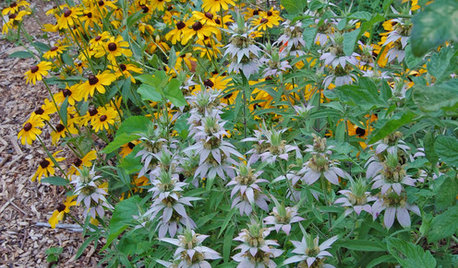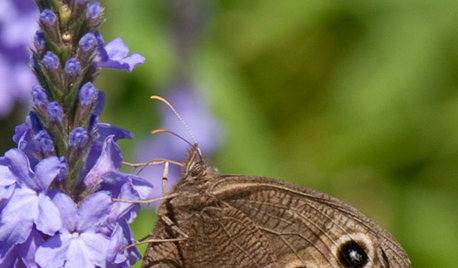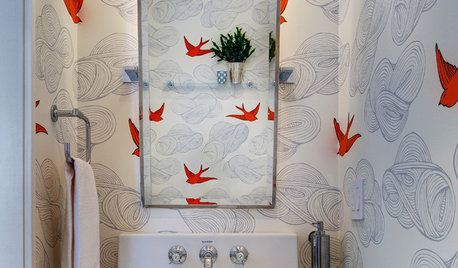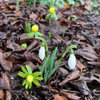Black Eyed Susan - Spots on Leaves
md581877
15 years ago
Related Stories

FLOWERSRudbeckia Mania: Go Beyond Black-Eyed Susan in the Garden
Branch out from typical nursery fare, with lesser-known Rudbeckia species that have delightfully unexpected features
Full Story
GARDENING GUIDESGreat Design Plant: Black-Eyed Susan
Plant seeds this fall for rich swaths of golden blooms in the garden come summer
Full Story
GARDENING FOR BUTTERFLIESButterfly Gardening: Delight the Eyes With Living Sculptures
Surprise and thrill with a garden that attracts magical winged creatures, bringing color, movement and life
Full Story
GARDENING GUIDESWhat's Wrong With My Plant? Leaves Often Hold the Clues
Learn how to identify common plant ailments by reading their leaves
Full Story
KITCHEN DESIGN12 Items Worth a Spot on Your Kitchen Counter
Keep these useful tools and accessories out in the open to maintain high function without spoiling the view
Full Story
GARDENING GUIDESGreat Design Plant: Spotted Beebalm (Monarda punctata)
Looking for unusual, long-lasting blooms, low maintenance and deer resistance? Try this self-sowing perennial
Full Story
GARDENING GUIDESGreat Design Plant: Verbena Stricta Tolerates Tough Spots
With its subtle beauty and long-lasting flowers, this pollinator pleaser is a boon to wilder areas
Full Story
FALL GARDENING5 Ways to Put Fall Leaves to Work in Your Garden
Improve your soil and yard the organic way with a valuable garden booster that grows on trees
Full Story
MOST POPULAR102 Eye-Popping Powder Rooms
Flip through our collection of beautiful powder rooms on Houzz and fill your eyes with color and style
Full Story
COLORDreaming in Color: 8 Eye-Opening Yellow Bedrooms
Start your day energized and cheerful with bedroom hues that sing of sunshine or golden fields
Full StoryMore Discussions







echinaceamaniac
echinaceamaniac
Related Professionals
Accokeek Landscape Architects & Landscape Designers · Ballwin Landscape Architects & Landscape Designers · Horsham Landscape Architects & Landscape Designers · Manhattan Beach Landscape Architects & Landscape Designers · Mountain Brook Landscape Architects & Landscape Designers · Arlington Landscape Contractors · Edmond Landscape Contractors · Arden-Arcade Landscape Contractors · Dinuba Landscape Contractors · Framingham Landscape Contractors · Reedley Landscape Contractors · Westford Landscape Contractors · Wheat Ridge Landscape Contractors · East Norriton Landscape Contractors · Maplewood Landscape Contractors